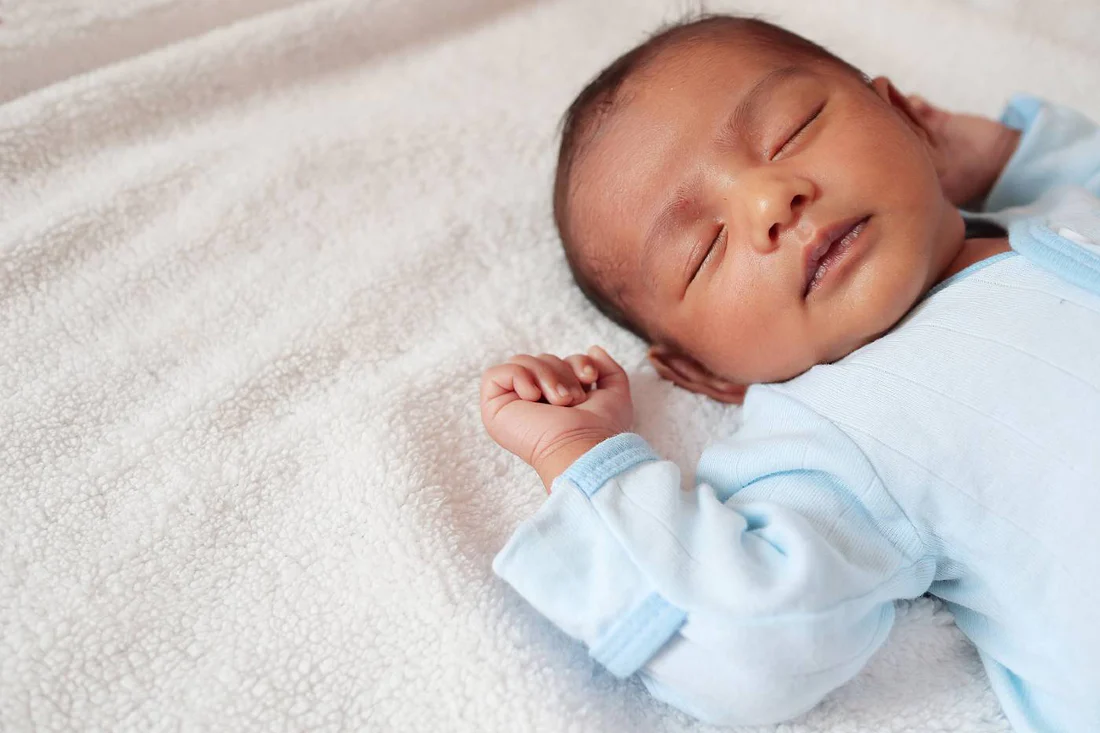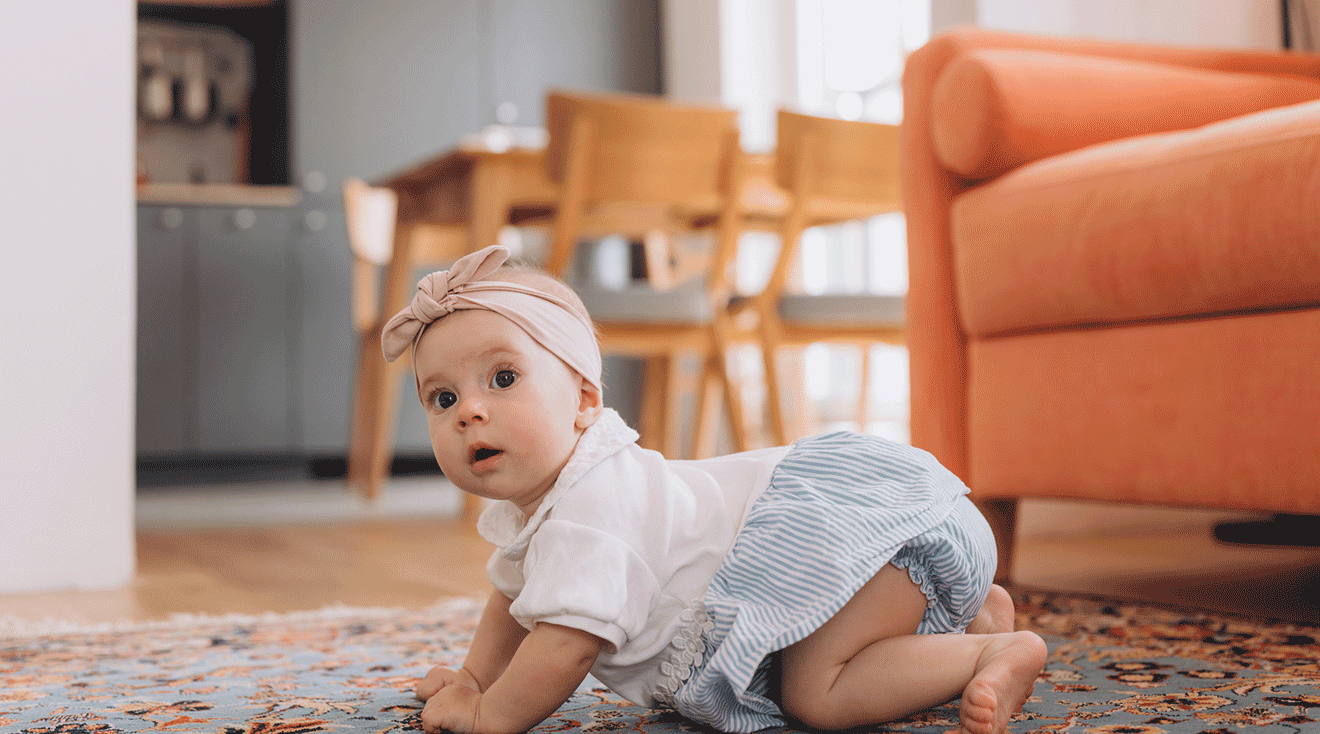I love white noise! It’s a fantastic tool to help babies, big kids, and even adults get the sleep they need. After all, there’s a reason white noise is a key element of my 5 S’s for soothing babies!
For instance, research shows that white noise can help 80% of infants fall asleep in just 5 minutes, it can increase sleep in colicky babies, and even the American Academy of Pediatrics recommends white noise to improve Baby sleep.
The reason? White noise helps turn on your baby’s innate calming reflex, which is their built-in “on the button” for sleep. And as babies get older, white noise becomes a learned sleep cue.
But even with all the (well-deserved) hype, some parents are skeptical about using white noise to help their children sleep.
They may worry that their baby will become too reliant on white noise or that white noise may damage their baby’s hearing. But I’m here to tell you that these are mostly white noise myths! Here, I set the record straight.
White Noise Mistake #1: Skipping White Noise Because Baby Sleeps So Well
White noise can make good sleep better…even for easy babies. Plus, white noise can help prevent sleep disasters that often derail baby sleep between 4 and 12 months.
Yup, the dirty little secret of infant sleep is that it’s common for sleep to suddenly fall apart after the fourth trimester.
Sleep can flip back to the brain-numbing, every two-hour-waking that you thought you left far behind in the “old days,” right after birth. This happens because:
- The calming reflex fades. The calming reflex, which is nature’s “reset button” to quiet crying and induces sleep, fades away, so the jiggly, loud shush of the 5 S’s that worked like a charm at 2 months may have lost its magic.
- Babies become super social. And when they lightly wake during the night (as all kids and adults do) they want to see your smiling face and be cuddled in your arms.
- Swaddling comes to an end. Weaning from being swaddled means your little one can startle awake more easily.
- Teething happens. Teething discomfort can be just throbbing enough to rouse your little bunny out of light sleep. (Learn how to safely ease your baby’s teething pain.)
The good news? Using the right white noise often helps parents sidestep these issues. Within weeks of using white noise, your little one will connect white noise with the pleasure of sleep.
Oh yeah, I recognize that sound…Now I’ll have a nice little snooze. Plus, as babies pass through infancy, white noise helps them sleep through outside distractions, such as a too-loud TV, and inside distractions, such as mild teething pain.
White Noise Mistake #2: Playing White Noise on a Constant Loop
You’re not supposed to play white noise all day long! Instead, keep it in your back pocket to aid sleep or calm fussing.
Hearing the normal hum of home for many hours a day helps children master the nuances of all the interesting sounds around them, such as speech, music, and so forth.
That means, turn on white noise during your child’s bedtime routine—and throughout their sleep—but turn it off during the rest of the day.
White Noise Mistake #3: Assuming All White Noise Is the Same
People talk about white noise as if it’s just one thing. But white noise is not chirping birds, jungle sounds, crashing waves, or gentle lullabies! And not all white noise is white noise for sleep.
There are two types of white noise—high pitch and low pitch—and only one induces sleep. High-pitch white noise is harsh, hissy, whiney, and annoying, like sirens, alarms, beepers, and even screams. These sounds are great for getting your attention, but they’re terrible for sleep.
On the contrary, low-pitch white noise is droning and hypnotic. It’s like the monotonous rumble of cars and planes or the continuous drone of rain on the roof. These sounds are terrible for capturing your attention but fantastic for lulling you to sleep.
These white noise sounds are more like the sounds Baby heard in the womb…and the sounds babies prefer!
(When sound bounced off the velvet walls of the womb, they were filtered through a sea of amniotic fluid, which removed high pitch sounds, leaving just a deep thunderous rumble that babies love.)
While many so-called white noise machines and apps tout 20+ sounds, just a few of their sounds are correctly engineered white noise that offers magical womb-like shushing that works to lull babies to dreamland.
For the real deal, turn to white noise that has been specifically designed to soothe fussiness and boost sleep, like the sounds in my award-winning SNOO bassinet, SNOObear, and my SNOO sounds download.
White Noise Mistake #4: Confusing White Noise for Pink Noise
People talk about two “cousins” of white noise sounds: pink noise and brown noise. Pink noise is a little deeper sounding than white noise and brown noise is even more rumbly with extra low pitch sound. While both sounds can be relaxing, white noise is still best for sleep!
White Noise Mistake #5: Quietly Playing White Noise Sounds for Sleep
Before they were born, your baby was serenaded by the constant rumbly sounds of the womb. And that’s why a super quiet room can be unsettling for little ones…and not conducive to sleep.
Instead of hushed sleep space, babies crave rumbly white noise—and that’s especially so when they’re upset. That means that your whisper-quiet white noise machine simply won’t settle a crying baby.
To calm an upset baby—and turn on their innate calming reflex (nature’s “reset button” to help calm crying and bring about sleep)—you’ll need to temporarily increase the volume of your white noise to match your child’s crying. (Fun fact: My SNOO Smart Sleeper does this automatically when Baby fusses.)
For folks without a white noise machine, you can do this by putting your mouth close to your baby’s ear and making a strong “Shhhhhhhhhhhhhhh” sound.
Once your baby’s outburst begins to settle, you can keep the calming reflex turned on by lowering the white noise to roughly the intensity of a gentle shower. (SNOO is designed to automatically lower the white noise to a deep, rumbly sound as babies calm, too)
White Noise Mistake #6: Skipping White Noise Because It’s a “Sleep Crutch”
There’s no need to avoid white noise because you worry your baby might become too reliant on the sound for sleep! For years, parents can continue to use white noise with their children—and themselves—to boost sleep, and there’s zero harm in it.
Think of white noise as just another healthy sleep tool—like your comfy pillow and warm blanket—that helps get you to dreamland. That said, it’s pretty easy to wean your little one from white noise whenever you want.
(Though again, it’s not necessary!) Simply lower the sound gradually, bit by bit, over a week or two until it’s finally off.
White Noise Mistake #7: Ditching White Noise in the Toddler Years
Toddlers respond to white noise just as much as babies do…it’s just that the reason is slightly different. Think about it like this: Do you still get sleepy when you’re riding in the passenger seat, getting gently jostled while listening to the steady hum on the highway?
If so, then you already know that the power of rocking and white noise lasts! Whether you call it muscle memory or a Pavlovian response, white noise continues to work well past infancy.
Adding to the efficacy: White noise muffles would-be disruptive sleep sounds, like a dog barking outside or a loud truck passing your window.
Proper white noise creates a kind of “blanket of sound” that masks sudden shifts in sound consistency that can often wake toddlers (and adults) up.
The key, of course, is selecting the right low-pitch white noise that’s droning and hypnotic…not inconsistent sounds, like music, waves, or birds chirping.
White Noise Mistake #8: Assuming White Noise Is Bad for Baby’s Hearing
Are white noise machines safe for babies’ hearing? The answer is yes! Should you blast your white noise machine at max volume and situate it right next to your little one’s head all night long?
Of course not! But if you keep white noise at a safe level and a safe distance from your baby’s ears, there’s absolutely nothing to worry about.
And if your baby is crying, you can safely boost the volume of your white noise machine for several minutes to match the level of your baby’s cries.
After Baby drifts back to sleep—and has been asleep for 5 or 10 minutes—reduce the white noise volume back down to the level of a soft shower. (Again, SNOO does this automatically.)
White Noise Mistake #9: Not Using the Best White Noise Machine for Babies
Not all white noise machines are created equal. Most white noise machines don’t offer that low rumbly noise babies need…and they’re not responsive.
Not only does SNOO automatically and continuously play white noise that gradually increases in response to your baby’s cries, but it’s also specially designed to mimic the low, rumbly white noise babies love most.
And our SNOObear plays familiar SNOO white noise for 30 or 60 minutes, but then continues to “pay attention” to your baby for an additional three hours…and “wakes up” and plays more soothing white noise to help your little one settle back down if it “hears” your tot starts fussing again.











